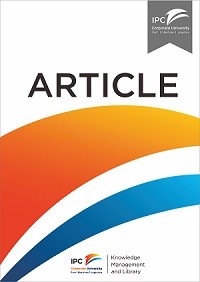Article
A new method for detecting outliers in Data Envelopment Analysis
Data Envelopment Analysis (DEA) is a computationally convenient way to measure efficiency that does not require an explicit functional relationship between inputs and outputs. However, because the frontier is constructed using extreme observations, DEA can be sensitive to extreme points, especially when data may be contaminated by measurement error. In such settings, the technical efficiency scores calculated from datasets that include outliers can be misleading. Timmer (1971) was among the first to recognize the potential sensitivity of computed technical efficiency measures to outliers when linear programming techniques are used to measure efficiency. In other settings, outliers may simply represent outcomes observed accurately, but with low frequency, and hence, worthy of further investigation
Ketersediaan
Informasi Detail
- Judul Seri
-
A new method for detecting outliers in Data Envelopment Analysis
- No. Panggil
-
ATC LO TRA a
- Penerbit
- United States of America : Routledge., 2008
- Deskripsi Fisik
-
4p
- Bahasa
-
English
- ISBN/ISSN
-
1466 4291
- Klasifikasi
-
LO
- Tipe Isi
-
-
- Tipe Media
-
-
- Tipe Pembawa
-
online resource
- Edisi
-
2008
- Subjek
- Info Detail Spesifik
-
-
- Pernyataan Tanggungjawab
-
Nam Anh Tran
Versi lain/terkait
| Judul | Edisi | Bahasa |
|---|---|---|
| The efficiency of European container ports: a cross-sectional data envelopment analysis | 9 | en |
| Environmental efficiency of ports: a data envelopment analysis approach | en |
Lampiran Berkas
Komentar
Anda harus masuk sebelum memberikan komentar

 Karya Umum
Karya Umum  Filsafat
Filsafat  Agama
Agama  Ilmu-ilmu Sosial
Ilmu-ilmu Sosial  Bahasa
Bahasa  Ilmu-ilmu Murni
Ilmu-ilmu Murni  Ilmu-ilmu Terapan
Ilmu-ilmu Terapan  Kesenian, Hiburan, dan Olahraga
Kesenian, Hiburan, dan Olahraga  Kesusastraan
Kesusastraan  Geografi dan Sejarah
Geografi dan Sejarah